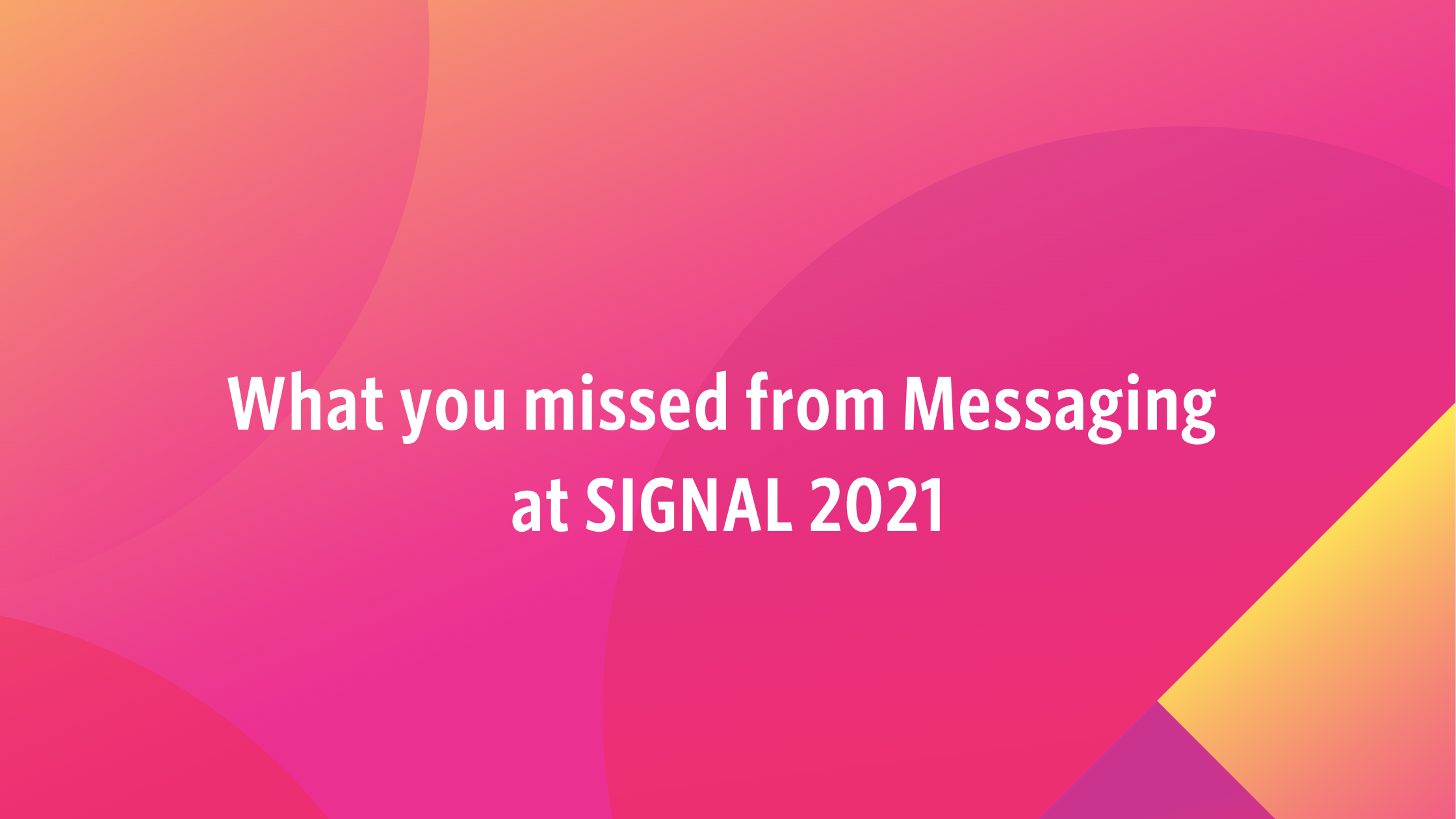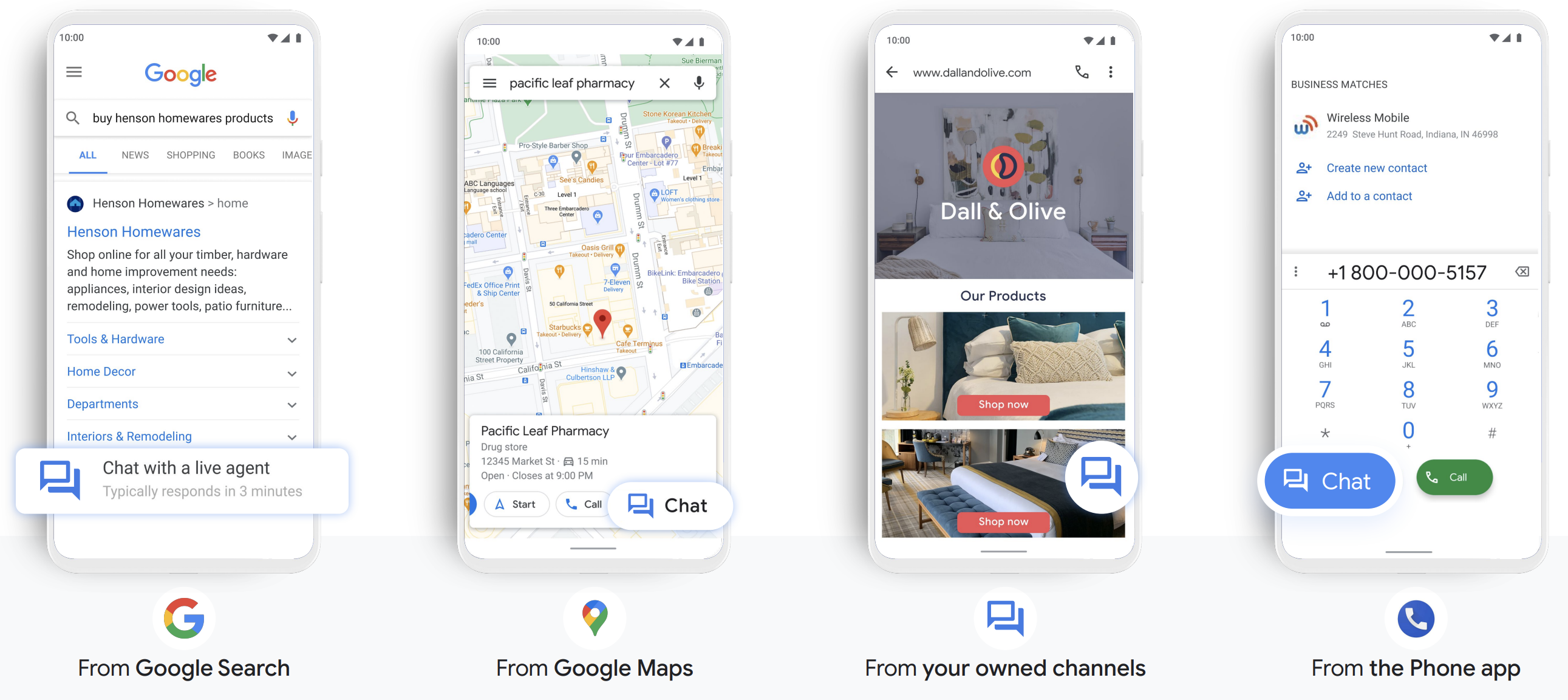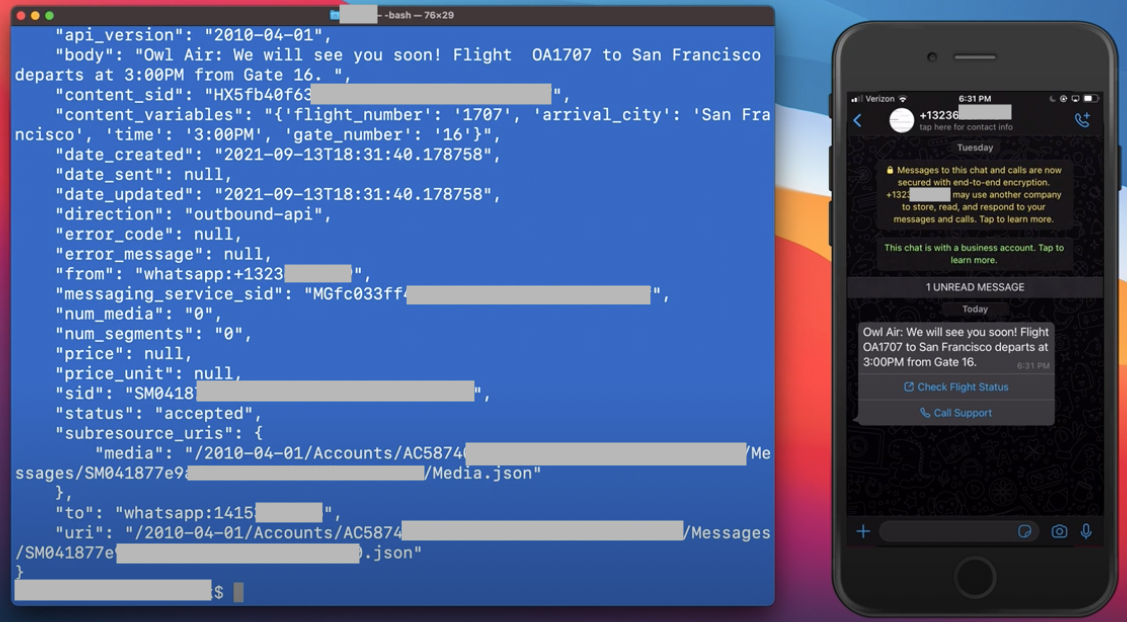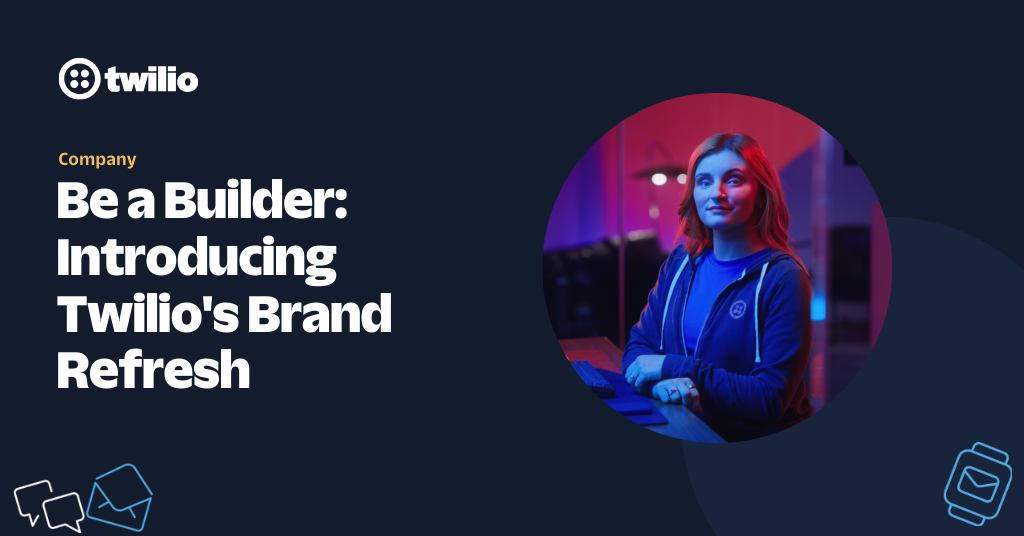What you Missed from Messaging at SIGNAL 2021
Time to read: 4 minutes

Yesterday, we announced Twilio MessagingX, one platform for the next decade of business messaging. We also shipped a ton of new features to power messaging in a trusted ecosystem with more ways to reach consumers than ever. Here’s the rundown of the biggest ships to help you reach more consumers with messaging.
Engagement in a trusted ecosystem
From the very beginning, our goal was to deal with the complexity of the carrier and telecommunications ecosystem head-on so that developers could do what they do best – innovate. There is no bigger shift in the US carrier ecosystem than the shift to the US A2P 10DLC routes – and we approached this once in a generation shift just like we did in the early days of Twilio, with software.
We have simplified onboarding through the Twilio Trust Hub in the Twilio Console and built APIs to allow ISVs to create their own registration workflows. We have also taken new requirements like per campaign throughput and daily message send limits and created advanced throughput management, as well as granular reporting within Messaging Insights to see per-carrier messaging.
We doubled down on our investment in the ecosystem to support every builder – from the enterprises looking to scale across new channels to the side project you have been working on in your spare time. And, if you send fewer than 3000 messages per day with fewer than 5 US local long-code phone numbers, you don’t need to worry about the complexities of an enterprise level ecosystem because there is no monthly registration fee! That means that you can focus your time and money on doing what you do best, building.
“Messaging” means more things than ever
The world of business messaging has come a long way from the humble beginnings of a 160 character SMS. New channels like WhatsApp, Facebook Messenger and Google Business Messages offer new ways to engage with customers. Each messaging channel is unique and filled with its own complexities which means that, as a developer, you have to think about the channel-specific nuances like segmented user experiences and conflicting architectures. As you build for these new channels and customer preferences, we’re releasing new channels and software for every use case.
Chat-based customer care with the Conversations API
You may have already built on the Conversations API, our cross-channel API for multiparty, multichannel messaging. With Conversations, you can create “rooms” and orchestrate across channels like SMS, MMS, WhatsApp, mobile, and web chat, to power communities and conversational customer care. To reduce development time, we’re releasing quick deploy apps and UI kits for iOS, Android, and web. This production-ready code comes with the tools you need to build amazing chat experiences in your web or mobile app.
MMS for healthcare, marketing, and more
With all of the emerging rich messaging app channels, it can be easy to forget about the original rich channel, MMS or multimedia messaging service. Twilio’s MMS capabilities are growing and we are now able to support:
- Group texting for conversational use cases: Twilio is the only provider in the ecosystem that supports true group texting - and up to 20 participants!
- HIPAA eligible MMS messages, providing a secure way to support our growing healthcare use cases
- Longform texting over MMS: Developers know the power of emojis, images, and gifs. Now everyone has the flexibility to optimize costs for those high-segment messages.
2.2 billion consumers at your fingertips with the WhatsApp Business API
There have been over 890k projects built on the WhatsApp Business API with Twilio since we launched in 2018 and our capabilities continue to grow. You can now start building interactive experiences with interactive templates using call to action buttons and quick replies that are available within the Twilio Console. This allows businesses to streamline customer responses and guide them through conversational interactions.
Meeting consumers where they are with Google Business Messages
We also announced that Google Business Messages is now available as a Conversations channel in Pilot. With over 5.5 billion searches on Google a day, users are looking for answers and guidance from the businesses they visit online. Google Business Messages allows you to communicate with your customers where they are, in their moment of need. With Google Business Messages , consumers can now engage from where they are already spending their time – in Google Search, Google Maps, Google Ads, or a chat widget on your website – and you can orchestrate the conversation just like you would any other channel supported by the Conversations API.

Streamlined development with the Twilio Content API
With new channels, each with their own set of features and requirements, you need a way to access the right capabilities without slowing down development. Our solution? The Twilio Content API (now in pilot) allows you to create a consistent rich messaging experience across channels through a unified template. This means that you no longer need to worry about the channel nuances or refactoring required to send across channels. This framework enables you to drive engagement with rich features, minimize development time, future proof engineering work as new channels are added, and streamline template approval processes for platforms such as WhatsApp.

Join our team at SIGNAL and watch a demo of the Content API in action on Thursday, October 21st from 2:30 PM to 2:45 PM PST.
That’s a wrap on what was announced in the messaging space at SIGNAL 2021. Twilio MessagingX ties together a decade of trust, quality, and choice through our new enhancements in A2P messaging, channel availability, and API choices. With all of the exciting things to come in the next decade – we can’t wait to see what you build!
Related Posts
Related Resources
Twilio Docs
From APIs to SDKs to sample apps
API reference documentation, SDKs, helper libraries, quickstarts, and tutorials for your language and platform.
Resource Center
The latest ebooks, industry reports, and webinars
Learn from customer engagement experts to improve your own communication.
Ahoy
Twilio's developer community hub
Best practices, code samples, and inspiration to build communications and digital engagement experiences.


